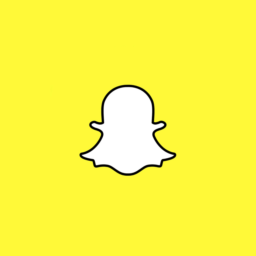My music consumption has been clearly impacted by the lack of net neutrality on my new mobile plan. Here are my key takeaways as a heavy user of music services.
This Spring, I moved from The Netherlands to Berlin, which means setting up new contracts for everything. While I’m still waiting for my flat to be connected to the internet (for 2 months already!), my mobile plan is keeping me connected.
My mobile provider Telekom, known as T-Mobile in most countries, is zero-rating certain partner services. So data consumed by streaming from the Netflix or YouTube bundles are not deducted from my 6GB / month data bundle.
I decided to give the bundle a try, as I think the EU will eventually declare zero-rating in violation of net neutrality (which means the telco should compensate me or release me from the plan). Net neutrality demands that you treat all traffic the same, and while they’re not prioritizing traffic of particular services over others in terms of speed, zero-rating does influence consumer decisions over what service they use.
Here are my main take aways of living without net neutrality for the last 6 weeks or so.
1. Zero-rating influences the services you use
This is beyond a doubt for me. When I want to listen to music, I now search music on YouTube (zero-rated partner) instead of through Spotify (not a zero-rated partner). I basically only listen to Spotify through offline synced music, and have stopped using it as a way to explore music – until I get WiFi at home, or Spotify gets zero-rated.

2. Spotify’s stickiness is strong
Despite the fact that Apple Music, Amazon Prime Music, and Napster (Rhapsody) are all included in the zero-rated partners, I’ve somehow stuck with Spotify. I have so many years of history in there, that it’s hard to start using a different app.
I have a lot of friends on Apple Music, because they were the first major Western music service to launch in Russia and really double down on the market (as opposed to Deezer, which struggled to gain traction). Having lived there a few years, most of my friends are on there now. But having done 2 three month trials, I never really developed a feeling for the service. Can’t stand iTunes either by the way (I listen to files through VLC Mediaplayer instead).
But the key point here is:
Music is not the most important part of music services. It’s the behaviours around the music. For Spotify, the only service that has managed to help me find a new home for some of my behaviours is YouTube, but to move collection management to a new place: no way.
And to clarify that first statement: if you have all the music, and a lot of other services do too, the music is no longer the key point that people come to you for. People never had a music access problem: piracy solved that. The music access issue was an industry problem, not a consumer-problem.
3. It’s hard to dig into niches through YouTube’s mobile app
I’ve been trying to use the YouTube app as a kind of radio station, because it sucks to search for decent playlists in there. The problem with the Play Next function, is that when you start on something very niche, it sends you ‘upward’ to more popular tracks. So if you’re listening to underground trap, you end up on Migos after a couple of tracks.
Likewise for related music on particular music videos. You have to sift through unrelated recommendations that are related to your personal profile, rather than the particular thing you’re viewing, but even then, it directs you out of the niche and into the mainstream.
4. Netflix finally found its way into my life
I’ve never really developed a strong habit for Netflix, but it finally happened. Browsing the web, and reading article after article, gets tiring when you’re doing it from a small mobile screen (I’m on iPhone 5s).
Besides, I get ‘data anxiety’: am I using too much data? Will I have enough data at the end of the month? Better play it safe: Netflix.
This actually pulls me away from Reddit, Instagram, Facebook, and other social platforms. Which brings me to my next point.
5. Using YouTube as my default mobile music service is keeping me from social networks
The thing with YouTube is that it can’t keep playing music in the background, unless you are on a certain subscription that’s not available in Germany.
Because of this, I have to choose: am I going to listen to music, or am I going to write to a friend, see what they’re posting on Instagram, etc.
6. If I cared less about music, I’d switch services
The reason why I’m using YouTube, if not obvious by now, is because it’s a nice temporary space to do some of the things I’d prefer to do on Spotify.
But if I were less invested in Spotify, I’d 100% be using one of the partner services offered. I would not even consider any other options. And I think this goes for most consumers, who are not quite as heavy users of music services. It’s troubling: it gives ISPs and mobile operators a lot of control over the music, video, and social landscape.
And for one aspect of music, it already changed me over: I stopped watching live streams on Facebook and Twitch, and instead the only place where I watch live video is YouTube now.
















